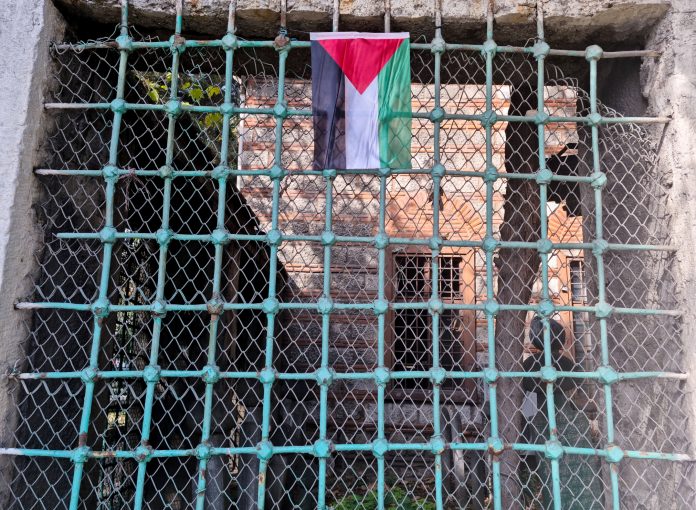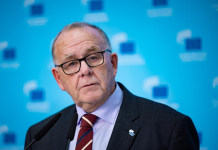Today, multiple regions face the grim reality of genocide. Genocide Emergencies in Myanmar, Gaza and Sudan, and major warnings elsewhere, underscore the failure to stop mass atrocities. There is an urgent need for global intervention and mass education
The global conscience is strained by the grim reality of multiple unfolding genocides and mass atrocities worldwide. Currently, numerous populations remain under severe threat, a pattern meticulously tracked and categorised by organisations like Genocide Watch.
The organisation utilises a three-tiered alert system: a Genocide Watch signals the early stages, a Genocide Warning indicates the process has reached Preparation and Persecution, and a Genocide Emergency is declared upon the onset of genocidal massacres and other acts of destruction, or Extermination.
From prolonged crises to sudden escalations, these events represent the ultimate failure of international diplomacy and collective security. Understanding these modern atrocities requires not only a look at the current emergency zones, but also the structural process that leads to them.
According to Dr Gregory H. Stanton’s model, the Ten Stages of Genocide, we can closely examine international affairs and see where dangerous situations are likely to occur. As classified by Genocide Watch, these stages are non-linear, operating simultaneously, with Classification—the division of society into “us versus them”—at the core.
Dr. Gregory H. Stanton’s 10 stages of Genocide
- Classification
- Dividing society into “us and them” by ethnicity, race, religion, or nationality. This is the primary division that facilitates later stages.
- Symbolisation
- Giving names or symbols to the classifications to visually distinguish the “them” group. Examples include forced identification cards or specific clothing.
- Discrimination
- Using law, custom, and political power to deny the civil rights, voting rights, or even citizenship of the targeted group.
- Dehumanisation
- Denying the humanity of the “them” group, often by equating them with animals, parasites, or diseases, enables the oppressor to overcome moral revulsion against murder.
- Organisation
- Genocide is planned, usually by the state or by formally trained and armed militias. Special units are often created for the sole purpose of killing.
- Polarisation
- Extremists drive the groups further apart through propaganda, which forbids intermarriage and social interaction. Moderates from the perpetrators’ own group are often targeted first to silence opposition
- Preparation
- Victims are identified, death lists are drawn up, and perpetrators’ forces are mobilised. Euphemisms (like “The Final Solution”) are used to disguise the genocidal intent.
- Persecution
- The victim group is segregated into ghettos or concentration camps, forcibly displaced, starved, or subjected to systematic abuse (torture, mass rape) and expropriation of property. Genocidal massacres may begin at this stage.
- Extermination
- The mass killing begins, which the killers see as “extermination” because they do not consider their victims fully human. This is the main phase of the genocide.
- Denial
- The final, lasting stage. The perpetrators or their successors deny that any crime occurred, cover up evidence (like mass graves), and blame the victims. Denial is considered conclusive proof of the intent to commit genocide.
As of late 2024 and into 2025, several regions around the globe are subject to these urgent alerts, reflecting mass violence and escalating humanitarian catastrophes. Current Genocide Emergencies highlight situations where widespread mass killings and related atrocities are actively occurring, resulting in massive displacement and loss of life.
Where are these emergencies happening?

The crisis in Gaza: Israel and Hamas
The conflict in the Gaza Strip is currently flagged under a Genocide Emergency, where violence has resulted in staggering casualties and a near-total collapse of essential services.
Official reports from the Gaza Health Ministry and other sources indicate a devastating human toll. As of October 2025, over 70,100 people have been reported killed in the Gaza war (including 68,172 Palestinians and 1,983 Israelis). An analysis published in The Lancet estimated 64,260 trauma-related deaths between October 2023 and June 30, 2024, likely exceeding 70,000 by October 2024.
Significantly, children, women, and the elderly accounted for 59.1% of trauma-related deaths in that period, though other casualty breakdowns show that children and women have been a substantial percentage of total casualties (some sources estimated over 40% were children two and a half months into the war).
The violence has resulted in near-universal displacement, with nearly all of Gaza’s population forcibly displaced, often multiple times. Furthermore, the systematic destruction of infrastructure has been extensive: as of July 2025, nearly 78 per cent of all structures across the enclave were destroyed or damaged.
Myanmar: Targeting the Rohingya
Myanmar remains under a Genocide Emergency, a designation related to the sustained persecution of the Rohingya Muslims.
The systemic violence, which escalated in 2017 with military clearance operations, has resulted in the flight of over 730,000 Rohingya to neighbouring Bangladesh. The remaining Rohingya population in Myanmar, estimated at about 630,000, lives under conditions of apartheid and faces acute vulnerability to renewed fighting and military abuses.
In recent months, reports have emerged of further atrocities, including mass killings and unlawful recruitment, alongside the continued deadly blockages of humanitarian aid as a form of collective punishment. As of late 2025, over 1.2 million Rohingya refugees remain in Bangladesh, facing increasingly dire conditions in overcrowded camps.
Escalating conflicts under genocide warning
Genocide Warnings signify that the genocidal process has advanced to the stages of Preparation and Persecution, demanding immediate preventive action.
Ethnic conflict in Manipur, India
The ethnic conflict in Manipur, India, between the majority Meitei community and the minority tribal Kuki-Zo community, is currently under a Genocide Warning. The clashes, which began in May 2023, have resulted in a significant number of casualties and displacement. Reports from October 2023 indicated over 200 people dead and more than 70,000 displaced.
A report from August 2025 highlighted that over 60,000 internally displaced people still remain in camps. The violence has been characterised by systematic hate campaigns, politically-fueled polarisation, and the total ethnic segregation of the state, with the vast majority of Meitei driven to the valley and Kuki-Zo forced into the hills.
Sudan: A catastrophic humanitarian crisis
Sudan is widely recognised by humanitarian organisations as facing the largest humanitarian crisis ever recorded and is a country with one of the highest estimated risks of new mass killings in 2024 or 2025, according to the Early Warning Project.
The violent conflict between the Sudan Armed Forces (SAF) and the Rapid Support Forces (RSF) has led to widespread civilian fatalities and mass displacement. Estimates from the UNHCR indicate nearly 13 million people have been forced to flee their homes as of 2025. This includes approximately 7.6 to 8.7 million Internally Displaced Persons (IDPs) within Sudan and over 4 million refugees who have fled to neighbouring countries such as Chad, Egypt, and South Sudan.
While initial estimates put civilian fatalities at around 7,000, more recent and extensive reporting indicates that up to 150,000 people may have been killed since the conflict began in April 2023.
Humanitarian Need
Over 25 million people—more than half of Sudan’s population—suffer from acute food insecurity, with multiple regions teetering on the brink of famine. The conflict has destroyed supply chains, and both sides have been accused of weaponising starvation by deliberately obstructing and looting humanitarian aid.
Mass atrocities, ethnic targeting and genocide determination
The warning of a high risk of new mass killings is rooted in extensive evidence of systematic atrocities. The US State Department, in January 2025, determined that the Rapid Support Forces (RSF) have committed genocide in Darfur during the current conflict.
The UN Independent International Fact-Finding Mission on the Sudan has concluded that both the SAF and the RSF are responsible for war crimes and crimes against humanity.
There has been continued destruction of essential services and healthcare systems, with over 70% of health facilities being non-functional due to damage, looting, or occupation. Attacks on hospitals by both sides have been widely reported, constituting war crimes.
Early-stage alerts and future risks
The Genocide Watch list also includes alerts for situations currently in the earlier phases of the genocidal process, and in 2024 released a statement covering Israel’s plans to invade Lebanon, indicating concern over a potential expansion of conflict that could put civilian populations at extreme risk.
These ongoing situations demonstrate that the structural processes of genocide are not confined to a single type of conflict or region but are a persistent global threat, necessitating constant vigilance and timely, decisive intervention.
This video from the International Rescue Committee highlights the global crises requiring urgent attention, including many regions mentioned in the Genocide Watch reports. 2025 Emergency Watchlist | The IRC – International Rescue Committee
Turning awareness into action: The role of the general public
The warnings are clear, documented, and universally accessible.
The existence of multiple Genocide Emergencies and Warnings confirms that the international community—composed of states and individuals—is consistently failing to halt the process of mass atrocity.
- Demand Political Action:
- Contact your elected officials (representatives, MPs, local leaders) and demand that genocide prevention be a foreign policy priority.
- Specifically ask them to support sanctions against perpetrators, push for arms embargoes on conflicting parties (like the Israel, SAF and RSF in Sudan), and advocate for robust funding of humanitarian and human rights investigation mechanisms.
- Support Proven Relief Organisations:
- Shift engagement beyond social media witnessing. Donate directly to non-governmental organisations (NGOs) and international bodies on the ground that are providing life-saving humanitarian assistance (food, water, medicine) and protection for refugees and internally displaced persons.
- Prioritise groups with a proven record of reaching populations in inaccessible, high-risk areas.
- Counter Denial and Raise Focused Awareness:
- Refuse to let these become “forgotten wars.”
- Write to editors, post focused, verified information, and engage with community and media outlets to demand sustained and accurate coverage.
Key sources:
- https://www.genocidewatch.com/tenstages
- https://www.hrw.org/breaking-news/2025/01/08/us-state-department-determines-genocide-sudan#:~:text=Human%20Rights%20Watch%20has%20documented,the%20part%20of%20the%20RSF. https://www.unhcr.org/emergencies/sudan-emergency#:~:text=Deadly%20conflict%20in%20Sudan%20has,Sudan%20and%20in%20bordering%20countries
- https://www.rescue.org/uk/watchlist
- https://www.hrw.org/news/2025/03/27/india-ethnic-clashes-restart-manipur
- https://www.concern.org.uk/where-we-work/republic-sudan?gad_source=1&gad_campaignid=22348177166&gbraid=0AAAAADk3Qvm9LKbhIL8WR08VhOmgiqUJZ&gclid=CjwKCAjwu9fHBhAWEiwAzGRC_y8Pbs2gMPt6WUusOEczET9Yk0KKfGCL7iCE9CZ0H_ustiuycJGChhoC66IQAvD_BwE
- https://www.bbc.co.uk/news/articles/cjel2nn22z9o
- https://www.crisisgroup.org/asia/south-asia/india/346-finding-way-out-festering-conflict-indias-manipur
- https://www.amnesty.org/en/latest/news/2025/05/authorities-should-urgently-rehabilitate-thousands-displaced-in-two-years-of-ethnic-violence-in-manipur/











